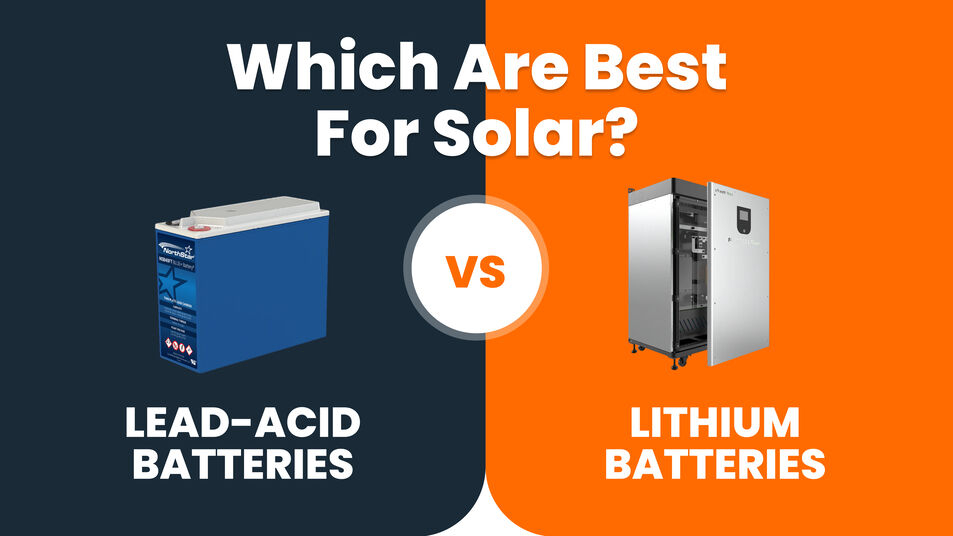When investing in a battery-based solar system, you’ll need to choose between two main types of batteries: lead-acid and lithium-ion. Both options power solar systems effectively but differ in cost, maintenance, and performance.
Lead-Acid Batteries: Affordable but High-Maintenance
Lead-acid batteries are a tried-and-true technology that has been around for decades. They’re the more affordable option, but they require regular maintenance and don’t last as long as lithium batteries.
1. Flooded Lead-Acid (FLA): These batteries require the most upkeep. Their plates are submerged in water, and they need to be checked and refilled every 1–3 months. Falling behind on maintenance can damage the batteries and void their warranty. FLA batteries also need to be installed in a ventilated space to release gases.
2. Sealed Lead-Acid (SLA): Available in two types—AGM and Gel—SLA batteries require less maintenance than FLA and are spill-proof. However, gel batteries tend to charge slower and output less power compared to AGM batteries.
Lithium Batteries: High Efficiency, Longer Lifespan
Lithium batteries, specifically Lithium Iron Phosphate (LiFePO4), are the premium option for solar systems. They require no maintenance, offer greater efficiency, and can last longer with deeper discharges. However, these benefits come with a higher upfront price. Over time, though, their efficiency can make them more cost-effective per kilowatt-hour of power storage.
Comparing Costs and Lifespan
When comparing the cost and lifespan of these batteries, lithium is a higher initial investment, but lead-acid batteries often need replacing within 10 years. Lithium batteries, on the other hand, can last 10+ years without replacement. Over the life of a solar system, the total cost of ownership for lithium can be more economical than lead-acid.
5 Key Differences Between Lead-Acid and Lithium
1. Cycle Life: Lithium batteries last through more charge/discharge cycles than lead-acid, making them ideal for daily use. Lead-acid batteries are better for occasional use but degrade faster with frequent cycling.
2. Depth of Discharge: Lead-acid batteries shouldn’t be discharged more than 50%, while lithium batteries can handle up to 80%, offering more usable capacity.
3. Efficiency: Lithium batteries are more efficient (95%+), storing and delivering more of the solar energy generated. Lead-acid batteries are around 80–85% efficient.
4. Charge Rate: Lithium charges faster than lead-acid, which can take up to twice as long to reach full capacity.
5. Energy Density: Lithium batteries offer more storage in less space, making them lighter and more compact than lead-acid batteries.
Which Battery Should You Choose?
– Full-time off-grid users: Consider lithium for long-term use or FLA if you’re prepared for regular maintenance.
– Vacation homes: SLA is ideal due to minimal maintenance needs.
– Emergency battery backup: SLA is a cost-effective option, as it won’t require frequent use.
– Industrial sites: Choose lithium for heavy usage, or SLA for lighter tasks with less maintenance.
Need more information? Contact Sunhub today!




